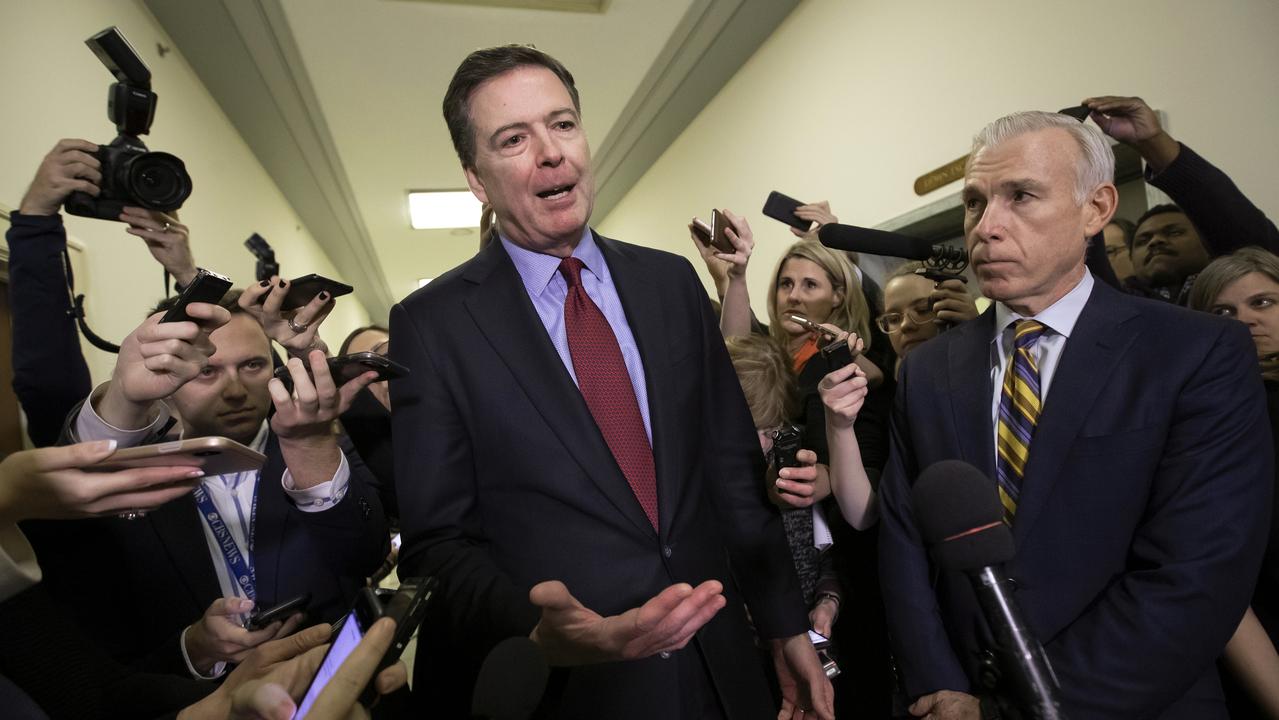Violence on the march
A LACK of transparency shrouds the effectiveness of the NT’s grog laws.

THE bare red dirt is cold and strewn with cans at “the Top”, a notorious drinking area on the road between Kalkarindji and Lajamanu, about 800 km south of Darwin.
Friends and family gather there, huddled on the edge of the dusty thoroughfare, to consume alcohol notionally restricted in their home communities.
One night last July, as often happens, an argument that began at the Top flared once everyone got back to town. There was shouting and people grabbed weapons.
Fighting erupted on a main street. A man called Joshua tried to intervene, but a second man, Peterson, bashed Joshua with a nulla nulla and then broke his leg.
Seeing Joshua lying injured, a woman called Georgina rushed forward, but Peterson’s son Arnold knocked her to the ground. Peterson then struck Georgina with the nulla nulla, lacerating her skull and bruising her rib cage. She had to be dragged away.
This is a snapshot of the appalling violence afflicting the Northern Territory, violence so common that it is often overlooked. The average monthly number of recorded assaults last year was more than double that a decade ago.
The Territory’s population grew only about 20 per cent over the period. Alcohol-related hospital admissions and emergency presentations in October were almost four times those of 2005.
Statistics show that the Territory is the most dangerous part of the country, with recorded attacks in some places reaching 10 times the national average. Reporting rates are by some estimates less than 50 per cent.
Most assaults involve alcohol and domestic violence; the majority of victims are indigenous women. Violence disrupts families, making normal life impossible.
Very recently there have been signs of a change. The government has been trumpeting police statistics showing that recorded assaults fell 19 per cent Territory-wide in the March quarter, compared with last year.
“It’s still early days but these quarterly figures are very encouraging, and show that our tough alcohol policies are starting to bite,” Chief Minister Adam Giles says.
Experts are sceptical. The change so far undoes increases since the Country Liberal Party came to power and scrapped Labor’s alcohol-control measures, and the improvements may not be sustained.
Many say there is no evidence the new government’s costly and controversial forced alcohol rehabilitation and on-the-spot alcohol ban schemes are working, attributing the reduction in recorded assaults instead to changes in policing.
Experts also accuse the CLP of hiding evidence that would allow its new schemes to be evaluated, and of rejecting other sensible measures on political grounds.
ALICE
Alice was at the bank in Katherine with her uncle when Curtis walked up behind her and punched her to the ground. He hit her repeatedly, causing her to have a fit. As she lay there writhing, he trod on her chest and punched her again. He hit her head on the pavement. He dragged her upright by her hair. He ripped off her skirt, leaving her naked from the waist down.
As she tried to escape, he pushed her so hard that the impact of her body damaged a parked mini-van. If a taxi driver had not intervened, who knows what would have happened. Curtis and Alice had been together 14 years. Both had been drinking earlier that day.
When the CLP came to power it scrapped Labor’s Banned Drinker Register as part of an election promise. The scheme — which required anyone buying takeaway alcohol to have their ID scanned and checked against a register of known drunks — had been in place for 14 months, with what was then inconclusive results.
Per capita alcohol consumption actually rose while the BDR was active, although most of the rise was in greater Darwin and not clearly related to alcoholism. Recorded violent crime rose in some areas but not all. There is evidence that sly-grogging also increased.
The National Drug Research Institute at Curtin University has since closely examined figures on alcohol-related hospital admissions, which Labor senator Nova Peris said in March had jumped by 80 per cent since the BDR was removed. The NDRI broke the data down into subsets, concluding that, in each case, there were statistically significant increases in alcohol-related harm after the BDR was scrapped that would not have occurred had it remained.
John Boffa, an Alice Springs-based doctor and spokesman for the People’s Alcohol Action Coalition, goes further. He argues that by estimating and correcting for the number of extra patients taken to hospital following recommendations of a coronial inquiry into the death in custody of Kwementyaye Briscoe, it is possible to show that in trend terms the number of admissions actually fell while the BDR was operating.
“The figures show that removing the BDR led to a significant increase in harm,” Boffa says.
BENJAMIN
Both Benjamin’s parents died when he was young. He started drinking at 14, sniffed petrol and now, aged 35, barely speaks English. He drinks because he gets nervous and finds it difficult to mix with people, but when he drinks he gets agitated and argues; when he doesn’t, he hears voices, some of which say bad things.
One day, after consuming a carton of beer and two bottles of wine with two friends, followed by another bottle of wine to himself and then four bottles more shared, he had an argument with his aunt and slapped her. He was “full drunk”, a term usually meaning barely able to see or stand.
His aunt’s family attacked him and he fell. A one-year-old walked past — Benjamin grabbed him and pulled his penis. The boy’s family saw what Benjamin was doing and beat him up. Later, Benjamin said he had wanted to make the little boy cry, describing his own behaviour as cruel but not sinister, and expressing remorse. His criminal record is seven pages long.
One of the CLP’s signature promises was to force alcoholics into rehabilitation, giving some an opportunity to re-evaluate their lives and others an incentive to keep out of sight. At about $43,000 per patient, the cost of the scheme, Alcohol Mandatory Treatment, is exorbitant. It is the first of its kind in Australia. The government has also legislated on-the-spot alcohol bans, or Alcohol Protection Orders. These are enforced through extensive, some say overbearing, policing, rather than at the point of sale. Despite these schemes now having operated for some time, there is very little information on how well they are working.
More than 300 people were referred for AMT between July and March. It is not known how many completed their treatment, completed multiple treatments, gave up drinking or relapsed. The government has acknowledged numerous escapes.
Likewise, at least 4000 APOs have been issued since January. But how many people have breached those orders, received multiple orders, been sent to jail for repeated breaches or experienced adverse encounters with police is unknown. Both the AMT and APO schemes were set up in the face of widespread opposition.
One of the few organisations with insight is the North Australian Aboriginal Justice Agency. Jonathon Hunyor, NAAJA’s principal legal officer, says “no evidence” has yet emerged that AMT is working.
“It is a policy that involves locking people up,’’ he says. “It costs a fortune. It comes at a significant opportunity cost, and it has sucked money away from other areas of dire need. Taking bold new approaches is all well and good, but we should surely expect that they will be rigorously designed and evaluated.” A secretive review of AMT is about legislation, not effectiveness, Hunyor says.
He also thinks APOs are “contrary to everything we should have learned” from the Royal Commission into Aboriginal Deaths in Custody. “There are many people who have now breached orders six and seven times, and are banned from drinking for years. They are, of course, alcoholics who cannot simply stop drinking because a policeman has given them a piece of paper,” Hunyor says.
“Their addiction is now a crime. They face repeated arrest, time in police cells and ultimately jail because they are alcoholics. Their increased contact with police inevitably sees them charged with associated offences like resist arrest and assault police.”
The Australian requested access to AMT facilities, data and interviews with key players.
JEREMY
Jeremy fell into deep depression after his four-year relationship with Tanya ended. He tried to get her back, but succumbed to alcohol and substance abuse and bouts of self-harm. One night, he visited Tanya at her sister Patrina’s house in Katherine. He punched Patrina repeatedly, telling Tanya he would keep on punching her sister till she agreed to return.
Then, brandishing two knives, he threatened to stab himself. Later, he jumped out from behind a tree yelling: “I got you two girls now.” He stabbed Tanya, then he gave her his T-shirt to staunch the bleeding. He told her he loved her, and that he was sorry.
The one policy that almost everyone agrees is cutting violence is Temporary Beat Locations — stationing police outside bottleshops — but it comes at a cost. The officers ensure that anyone purchasing takeaway alcohol lives in a non-proscribed area. In practice, TBL operates like a de facto supply restriction applied to most Aboriginal people, and police have been accused of targeting them unfairly, prompting demonstrations in Alice Springs. The policy has also upset members of the liquor industry, some of whom are now joining calls for the BDR to be reinstated.
Curiously, the argument that the BDR intruded upon liberty does not seem to apply to TBL, according to the CLP. Nevertheless, TBLs have been credited with reducing assaults by up to 50 per cent on occasion. Anecdotal evidence suggests that TBL, rather than the government’s other schemes, primarily account for the recent drop in recorded violence. But because the government is secretive — even banning individual departments from submitting to a federal inquiry into Aboriginal drinking — those claims are hard to test.
There is now abundant evidence that reducing access to alcohol curtails violence. Whether that ameliorates the social problems underpinning heavy drinking is another matter. Clearly, the BDR was inadequate on its own, but TBLs are expensive and distract police from other duties.
Perhaps some combination of the two would be better? Given the Territory’s still appalling levels of violence, it seems difficult to justify anything but a maximalist policy approach, by which the public has access to every piece of data and every plausible mechanism is tried. On what grounds would anything else be acceptable, knowing that, statistically speaking, before the end of the day you read this article, another five people will have been attacked?



